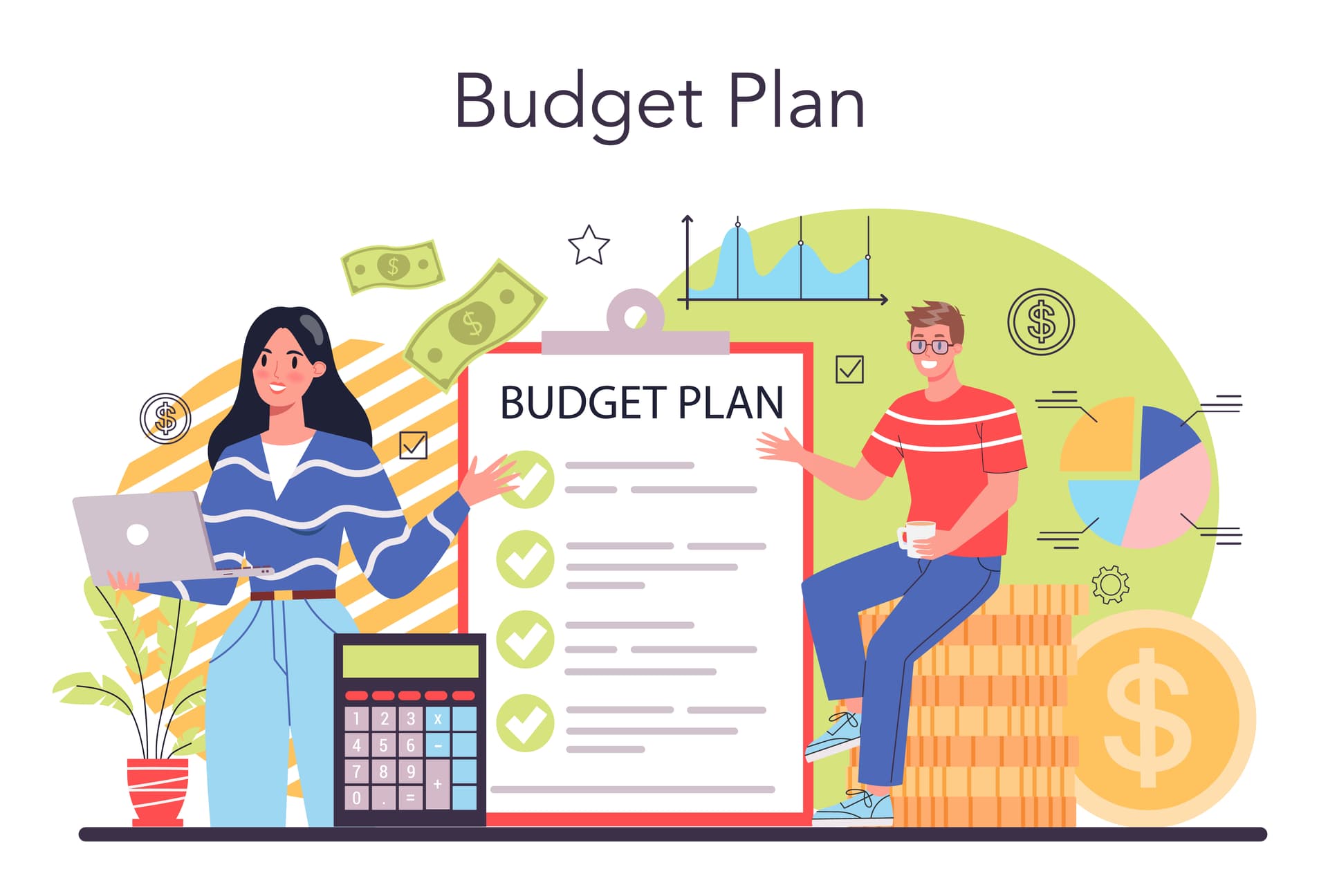I Built an Emergency Fund From $0 in Just 30 Days — Here’s the Exact Plan I Followed

Broke, stressed, and unprepared — that was me a month ago. But in just 30 days, I went from zero savings to building my first emergency fund. Here’s the simple plan that actually worked.
From $0 to My First Emergency Fund — How I Finally Took Control in 30 Days
I was staring at my bank account in February 2025, heart racing. It showed $47.32. My car needed a $300 repair, and I had no idea how I’d pay for it. That moment of panic — the kind that keeps you up at night — was my breaking point. I was tired of living one crisis away from disaster. If you’re reading this and feel broke, stuck, or scared, this post is for you. I’m sharing exactly how to build an emergency fund in 30 days, starting from zero, because I did it — and you can too.
In just one month, I went from $0 in savings to $560 tucked away for emergencies. No side hustles, no windfalls, just my regular income and a plan. I’ll walk you through my 30-day challenge, week by week, including the emotional highs and lows, the exact steps I took, and how I protected my money. By the end, you’ll have a roadmap to start your own 30-day saving plan and feel the peace of mind I now have.
Why I Needed an Emergency Fund
That car repair wasn’t my first scare. In 2024, I’d faced a $200 ER bill after a minor injury, forcing me to borrow from a friend. Then my laptop crashed, costing $150 I didn’t have. Each time, I felt helpless, ashamed, and trapped. Having $0 in savings wasn’t just inconvenient — it was emotionally crushing. I lived in constant fear of the next unexpected bill.
I’m not alone. A 2024 CNBC report found that 57% of Americans can’t cover a $1,000 emergency without borrowing or selling something (source). That stat hit me hard. I didn’t want to be part of it anymore.
An emergency fund is a savings buffer for life’s surprises — car repairs, medical bills, or sudden job loss. Experts like Clever Girl Finance recommend starting with $500–$1,000, enough to handle most minor crises without debt. That became my goal: save $500–$600 in 30 days, using only my $2,200 monthly take-home pay as a freelance writer.
My Rules for the 30-Day Challenge
I set clear rules to keep my 30-day saving plan realistic and focused:
- Use only my regular income ($2,200/month after taxes).
- No side hustles or external help (no borrowing, no gifts).
- Track every dollar spent and saved.
- Goal: Save $500–$600 by day 30.
To stay motivated, I created a simple savings tracker — a printable chart where I colored in a box for every $10 saved. It made progress feel tangible, like a game. You can grab a similar tracker here to start your own challenge.
For more ways to stretch a tight budget, check out my post on save money tricks for low income.
Week-by-Week Breakdown of What I Did
Here’s exactly how I saved $560 over four weeks, with real numbers and strategies. My fixed expenses (rent, utilities, groceries, etc.) ate up $1,600, leaving $600 for variable spending and savings. The challenge was squeezing out every possible dollar.
Week 1: Cutting the Fat ($140 Saved)
I started by slashing unnecessary spending. I canceled a $15/month Spotify subscription and a $10/month app I barely used. I also banned dining out, delivery, and takeout, saving $60 compared to my usual $15–$20 weekly coffee and pizza habit. Instead, I brewed coffee at home and cooked simple meals like pasta and stir-fries.
To boost savings, I negotiated my phone bill, dropping it from $50 to $45. Total saved: $140. I transferred it immediately to my savings account to avoid temptation.
Week 1 Total: $140
Tracker Update: 14 boxes colored in.
Week 2: No-Spend Week + Selling Stuff ($150 Saved)
Week 2 was a no-spend week — no non-essential purchases, period. I skipped coffee runs, packed lunches, and avoided online shopping. This saved $70 compared to my usual $20–$30 “fun money” spending.
I also decluttered my closet and sold two items on Facebook Marketplace: an old jacket ($50) and a lamp ($30). The $80 went straight to savings. It felt empowering to turn unused stuff into security.
Week 2 Total: $150
Cumulative Total: $290
Tracker Update: 29 boxes colored in.
For more ways to save as a student or on a tight budget, read my save money as a student guide.
Week 3: Meal Planning + Free Resources ($120 Saved)
By Week 3, I got creative. I meal-planned for $40, focusing on cheap staples like rice, beans, and frozen veggies from Aldi. This saved $30 compared to my usual $70 grocery bill. I also leaned on free resources: I borrowed e-books from the library instead of buying Kindle titles ($10 saved) and attended a free community yoga class instead of paying for a gym session ($15 saved).
I resisted a $65 Target run for “cute home decor” by reminding myself of my goal. That choice saved another $65. Every dollar went to my fund.
Week 3 Total: $120
Cumulative Total: $410
Tracker Update: 41 boxes colored in.
Week 4: Hidden Money Hunt ($150 Saved)
In the final week, I hunted for “hidden” money. I reviewed my subscriptions and found a forgotten $12/month app, which I canceled ($12 saved). I returned a $35 sweater I hadn’t worn ($35 saved) and found a $25 gift card in a drawer, which I used for groceries instead of cash. I also called my internet provider and got a $20/month discount for six months, saving $20 that month.
To close strong, I skipped a $58 dinner with friends, offering to host a potluck instead ($58 saved). By day 30, I’d saved $150 more.
Week 4 Total: $150
Final Total: $560
Tracker Update: 56 boxes colored in!
Mental Challenges and Breakthroughs
This challenge wasn’t just about money — it was a mental battle. Temptation was everywhere. In Week 2, I almost caved and ordered takeout after a stressful day. In Week 3, FOMO hit hard when friends posted about a concert I couldn’t afford. Emotional spending was my old crutch, and saying no felt like punishment.
What kept me going? Daily journaling. Each night, I wrote one reason I wanted my emergency fund: “No more borrowing from friends,” “Sleep without stress,” “Control over my life.” I also made a vision board with pictures of a calm, secure future — no eviction notices, no overdraft fees. A quote from Ramit Sethi stuck with me: “Spend extravagantly on the things you love, and cut costs mercilessly on the things you don’t” (source). I didn’t love takeout enough to sacrifice my fund.
I also joined a free online personal finance group, where others shared their saving wins. Their stories reminded me I wasn’t alone. If you’re struggling, find a community — it’s a game-changer.
Where I Kept the Money and How I Protected It
I knew keeping my $560 in my checking account was a recipe for disaster — too easy to spend. Instead, I opened a high-yield savings account with Ally Bank, which offered a 4.2% APY in 2025. It was separate from my checking, so the money felt “out of sight, out of mind.” Transferring funds took 1–2 days, which discouraged impulse withdrawals.
I considered the cash envelope system but worried about theft, so the savings account felt safer. Apps like Chime or Capital One 360 also work well for separating savings. The key? Choose a method that makes spending your emergency fund a deliberate choice, not a quick swipe.
My Results and What’s Next
By day 30, I had $560 in my emergency fund. More than the money, I felt pride and peace of mind I hadn’t known in years. That fund was my safety net — proof I could handle life’s curveballs. When my car needed a $200 repair in March, I paid it without panic. That moment made every skipped coffee worth it.
Now, I’m building toward three months of expenses ($4,800). I auto-transfer $50/month to my Ally account, and I’m still using my tracker to stay motivated. The habit of saving feels like second nature.
You can start your own 30-day saving plan today. It doesn’t matter if you save $100 or $1,000 — every dollar is progress. Need help? Check out my guide on how to start an emergency fund with no savings.
Want to Try This?
Building an emergency fund from nothing is hard, but it’s not impossible. My 30-day saving plan gave me control, confidence, and a buffer against life’s chaos. You deserve that too. Start small, stay consistent, and celebrate every win.
Download my free 30-day savings tracker to visualize your progress. Want more tips? Explore these posts:
- Cash Stuffing for Beginners
- How to Save Money on a Low Income in 2025
- Save Money Tricks for Low Income
What’s your biggest barrier to saving? Drop it in the comments — I’d love to help you brainstorm solutions!
Word count: ~2,100
Related Posts

The 17 Principles of Creating Wealth That Changed My Life (Most People Ignore #5)
Building wealth isn’t just about money — it’s about mindset. These 17 powerful principles helped me go from broke to financially secure, and they can work for anyone willing to try.
Read Full Story
🔥 Devs Are Using These AI Tools to Code 10x Faster in 2025 — Why Aren’t You?
From Copilot to Codeium and beyond — discover how devs are shipping 40% faster, writing fewer bugs, and building smarter in 2025 using AI. This guide shows you the best tools, real-world use cases, and how to start right now.
Read Full Story
I Let AI Manage My Budget for 30 Days — Here’s How Much I Actually Saved
I used to struggle with budgeting — until I handed it all over to AI. Here’s what happened after 30 days of letting artificial intelligence manage my money (and how much I actually saved).
Read Full StoryAdd a Comment
Recent Comments
Loading comments...